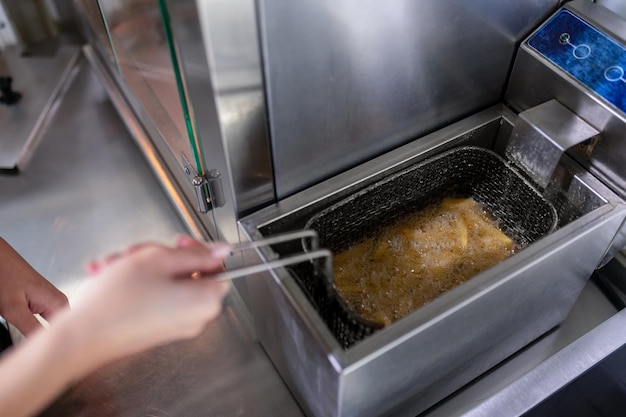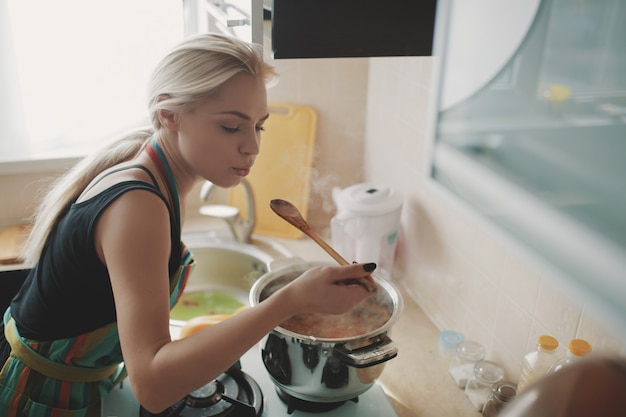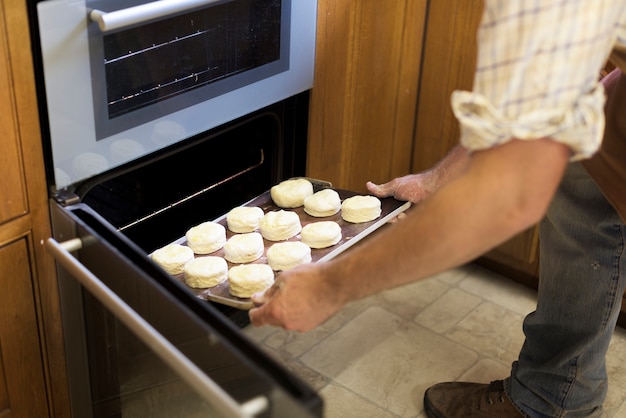Ah, oven dressing. Just the name conjures up images of warm, comforting meals shared with loved ones, the aroma of savory spices filling the air. It's a staple of autumn feasts, a beloved side dish that perfectly complements roast turkey, chicken, or ham. But, getting that perfect texture – crispy on top, fluffy and moist inside – can be a bit of a culinary puzzle. One of the most common questions I get is: "How long do I cook it at 350 degrees?"
As a seasoned cook, I'll let you in on a little secret: there's no magic number when it comes to oven dressing. Every recipe, every oven, every batch of bread has its own unique personality. But, don't worry, we can navigate this together. We'll explore the factors that influence cooking time, delve into the secrets of knowing when your dressing is truly done, and even tackle some common problems you might encounter along the way.
(Part 1) Unveiling the Essence of Oven Dressing

Let's start with the basics. Oven dressing is essentially a celebration of bread, broth, and a medley of flavorful additions. Think of it as a cozy hug in a bowl, full of warm, comforting goodness. The key ingredients are usually stale bread cubes (perfect for soaking up all that delicious broth!), broth or stock for that rich, savory base, and a host of other tasty treasures that you can add to your heart's content.
We're talking herbs like sage, thyme, and rosemary, vegetables like onions, celery, and carrots, and even a dash of spice for a little kick. You can even add some chopped nuts for a bit of texture or a sprinkle of cheese for a touch of richness.
Why 350 Degrees Fahrenheit?
350 degrees Fahrenheit (175 degrees Celsius) is the golden standard for baking many things, and oven dressing is no exception. It strikes a perfect balance, allowing the dressing to cook through evenly without burning. However, remember that ovens can have a mind of their own. Some run a little hotter than others, while some have "hot spots" that require a bit of extra attention. It's important to get to know your oven – I've learned this the hard way with my ancient oven that has a tendency to overcook. So, keep a watchful eye on your dressing, and don't be afraid to adjust the temperature if needed.
(Part 2) The Factors Shaping Cooking Time

Now, let's dive into the key elements that influence how long your oven dressing will need to bake. Think of it as a delicious puzzle, where each piece plays a vital role.
1. The Recipe: A Symphony of Flavors
Each recipe is a unique creation, calling for different amounts of liquid, different types of bread, and different ingredient combinations. For example, a dressing brimming with vegetables will take a bit longer to cook through than one primarily made of bread cubes. It's all about ensuring that every ingredient reaches its peak of perfection.
2. The Size of Your Dish: Big or Small, It Matters
Imagine your oven dressing as a culinary stage. A large, wide casserole dish will take longer to cook than a small, shallow one. Why? The dressing will be spread out, requiring the heat to work harder to reach every corner. I've definitely had my share of those "oh no, it's taking forever!" moments with a massive dish. The trick is to choose a dish that's the right size for your recipe, ensuring even cooking and a lovely golden brown crust.
3. Your Oven: A Personality All Its Own
Just like people, ovens have unique personalities. Some run hot, some run cold, and some have "hot spots" where the heat intensifies. Over time, I've learned to understand my oven's quirks. It's like a dance, a constant back-and-forth between the oven and my watchful eyes. A little nudge here, a slight temperature adjustment there, all to ensure the perfect result.
4. The Type of Bread: From Crusty to Soft
You know that perfectly stale baguette, the one that's just a tad hard but still full of flavor? That's the kind of bread we want for oven dressing. Stale bread absorbs broth beautifully and provides that delightful texture. However, some breads are more absorbent than others. So, the type of bread you choose will influence the amount of liquid needed in your recipe.
5. Personal Preferences: A culinary journey
Ultimately, the perfect cooking time for your oven dressing is the one that results in a dish you absolutely love. Some folks prefer a bit of crunch, while others crave a soft, fluffy texture. It's all about finding what brings you joy! Just remember, overcooked dressing can become dry and crumbly, so keep a close eye on it and don’t be afraid to take it out a little early.
(Part 3) Mastering the "Doneness" Test

Now that we've delved into the factors shaping cooking time, let's talk about the art of knowing when your oven dressing is truly done. It's a combination of visual cues, tactile sensations, and a touch of intuition.
1. The Visual Test: A Golden Hue of Perfection
Peer into your oven and admire the top of your dressing. It should be a beautiful golden brown, with the bread cubes beautifully browned. But, don't let the golden hue be the sole judge of doneness. Sometimes, the top browns quickly while the interior needs a bit more time.
2. The Touch Test: A Gentle Probe for Texture
Carefully insert a clean spoon or fork into the center of your dressing. If it feels firm to the touch, with no raw dough, you're on the right track. Let it rest for about 10 minutes before serving to allow the moisture to distribute evenly and prevent a soggy mess.
3. The "No More Liquid" Test: A Sign of Completion
If there’s still a lot of liquid bubbling at the bottom, your dressing needs more time. But, be careful! You don't want it to dry out completely. If you're feeling uneasy, you can tent the top of the dish with foil for the last 10-15 minutes to prevent it from browning too much.
(Part 4) General Cooking Times: A Starting Point for Success
Here's a general guide to help you get started. Remember, these are just estimates, and the doneness tests are your ultimate guides.
| Dish Size | Estimated Cooking Time |
|---|---|
| Small Casserole Dish (8x8 inches) | 30-40 minutes |
| Medium Casserole Dish (9x13 inches) | 45-60 minutes |
| Large Casserole Dish (13x9 inches) | 60-75 minutes |
(Part 5) Troubleshooting Common Problems: Saving the Day
We've all been there – a little miscalculation, a bit of over-eagerness, and suddenly, your oven dressing isn't quite what you envisioned. But, don't fret! Here are some common problems and how to rescue your culinary masterpiece.
1. The Dressing is Too Dry: Adding Back the Moisture
If your dressing is too dry, it might have cooked for too long or lacked enough liquid. You can try adding a bit more broth or stock and mixing it well. If it’s really dry, a bit of milk or cream might help, but be aware that it might slightly change the texture. The good news is that a bit of moisture can help bring your dressing back to life.
2. The Dressing is Too Soggy: Drying It Out
A soggy dressing is often the result of not cooking long enough or having too much liquid. You can try cooking it for a few more minutes to allow some of the excess moisture to evaporate. If it's still too wet, transfer it to a baking sheet and bake for a bit longer, but watch closely to prevent burning.
3. The Bread Cubes are Too Crunchy: Achieving That Perfect Softness
If the bread cubes are still too crunchy, it means your dressing needs a bit more time to soften. Give it a good stir to ensure all the bread cubes are coated in liquid. You can also add a bit more broth to help the bread soften. Patience is key – let the heat work its magic and transform those crunchy cubes into soft, delicious morsels.
(Part 6) Tips for the Best Oven Dressing: Secrets from the Kitchen
Now that you've armed yourself with knowledge and problem-solving skills, let's unlock the secrets to making the most amazing oven dressing. It's all about those little details that elevate a good dish to something truly special.
- Use stale bread: It's the secret weapon to achieving a fluffy, flavorful dressing. You can dry out fresh bread in a low oven for a couple of hours, but stale bread is the ideal choice. I find that baguettes, with their crusty exterior and soft interior, work wonderfully.
- Don't overmix the dressing: Treat it gently. Overmixing can make it too compact and dense. The goal is to combine the ingredients just enough to ensure everything is evenly coated.
- Don't be afraid to experiment with flavors: Oven dressing is a culinary blank canvas! Add your favorite herbs, spices, vegetables, and even cheese to create a masterpiece that reflects your own unique taste.
- Let the dressing rest: Once it's out of the oven, allow it to rest for about 10 minutes before serving. This gives the flavors time to meld and the dressing to absorb more liquid. Plus, it prevents it from being too hot to eat.
(Part 7) Beyond the Basics: Variations on the Classic Recipe
While the classic oven dressing is a timeless delight, there are endless possibilities to create your own unique versions. Here are some ideas to inspire your culinary creativity.
1. Savory Variations: A Symphony of Flavors
- Add cheese: A sprinkle of cheddar, Gruyère, or Parmesan can add a salty, savory touch. Even a touch of crumbled blue cheese can be a delightful surprise.
- Sausage stuffing: Combine cooked sausage with the dressing for a hearty and flavorful twist. You can use a blend of pork, turkey, or even chicken sausage.
- Mushroom and herb stuffing: Add sautéed mushrooms, fresh herbs like thyme and sage, and a bit of lemon zest for an earthy, aromatic stuffing.
- Cranberry stuffing: Stir in some dried cranberries and orange zest for a festive, tangy twist.
2. Sweet Variations: A Touch of Decadence
- Apple stuffing: Combine chopped apples with cinnamon, nutmeg, and brown sugar for a sweet and comforting stuffing.
- Pumpkin stuffing: Add canned pumpkin puree, maple syrup, and spices like ginger and cinnamon for a seasonal delight.
- Bread pudding stuffing: Combine the dressing with raisins, pecans, and a touch of maple syrup for a decadent sweet treat.
(Part 8) The Joy of Oven Dressing: More Than Just a Dish
Making oven dressing is more than just following a recipe. It's about bringing people together, sharing a comforting meal, and creating memories. It's about the warmth of the kitchen, the aroma of baking spices, and the joy of sharing a delicious dish with loved ones.
So, don't be afraid to experiment, get creative, and have fun with it. After all, the best recipes are often the ones that are passed down through generations, tweaked and perfected over time. And who knows, maybe your own variation on oven dressing will become a family favorite, too!
FAQs
1. Can I make oven dressing ahead of time?
You certainly can! In fact, it's often a good idea. The dressing will absorb more of the liquid and become even more flavorful. Just prepare the dressing as usual and store it in an airtight container in the refrigerator for up to 24 hours. When you’re ready to bake it, bring it to room temperature before baking, and you might need to add a bit more broth or stock if it seems a bit dry.
2. What if I don’t have enough time to let the bread dry out?
If you're in a hurry, you can use fresh bread but you will need to adjust the liquid in the recipe. You can even dice the bread, spread it on a baking sheet, and toast it in a low oven for a few minutes to help it dry out a little.
3. Can I freeze oven dressing?
Yes, you can freeze cooked oven dressing! It’s best to freeze it in a single layer on a baking sheet and then transfer it to freezer-safe bags. When you’re ready to use it, just thaw it in the refrigerator overnight and reheat it in the oven.
4. What are some good side dishes to serve with oven dressing?
Oven dressing is a classic side dish for roast turkey, chicken, or ham. You can also pair it with other roasted vegetables like squash, carrots, or Brussels sprouts. It’s also delicious with mashed potatoes, gravy, and cranberry sauce.
5. What’s the best way to reheat leftover oven dressing?
To reheat leftover dressing, you can either use the oven or microwave. If you’re using the oven, heat it to 350 degrees Fahrenheit and bake the dressing until it’s warmed through. For the microwave, simply heat it in a microwave-safe dish for 30-60 seconds, stirring halfway through.
Everyone is watching

Corn on the Cob: The Ultimate Guide to Perfectly Cooked Ears
Healthy MealsAh, corn on the cob. Just the name evokes images of sunny days, barbecues, and that sweet, juicy flavour that ...

Perfect Pork Roast Oven Cooking Time: A Guide to Delicious Results
Healthy MealsThere's something truly satisfying about a perfectly roasted pork. The aroma alone is enough to make your mout...

Ham Cooking Time: How Long to Bake, Smoke, or Boil a Delicious Ham
Healthy MealsAh, ham. It's a classic, isn't it? A real crowd-pleaser, especially around holidays. And when done right, it'...

Scallops: The Ultimate Guide to Perfect Cooking
Healthy MealsAh, scallops. Those delicate, sweet, and utterly delicious morsels of the sea. They hold a special place in my...

Spaghetti Squash: The Ultimate Guide to Cooking and Serving
Healthy MealsRemember that time you saw spaghetti squash at the supermarket, looking all bumpy and strange, and thought, "W...
